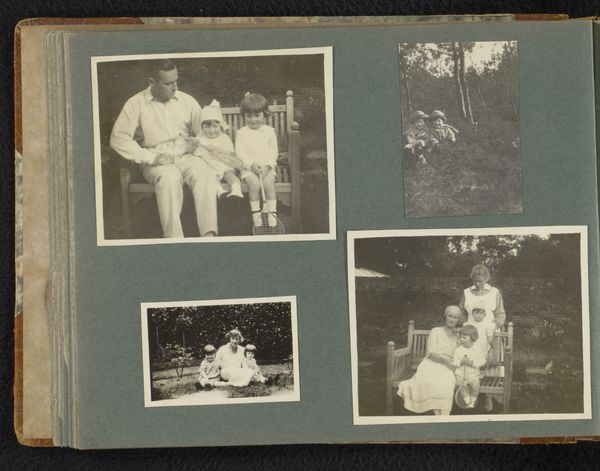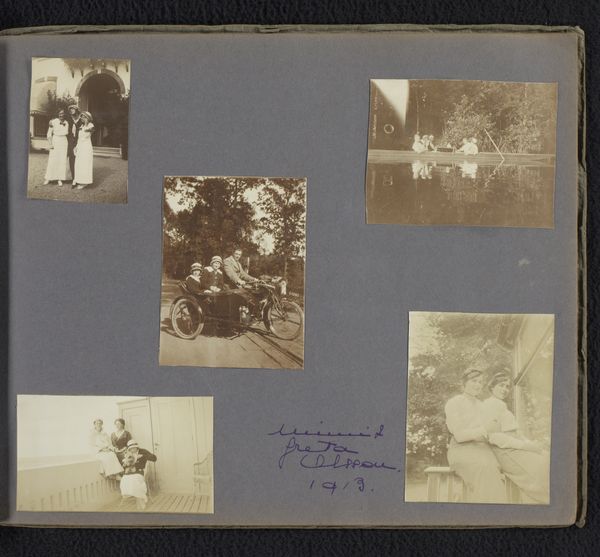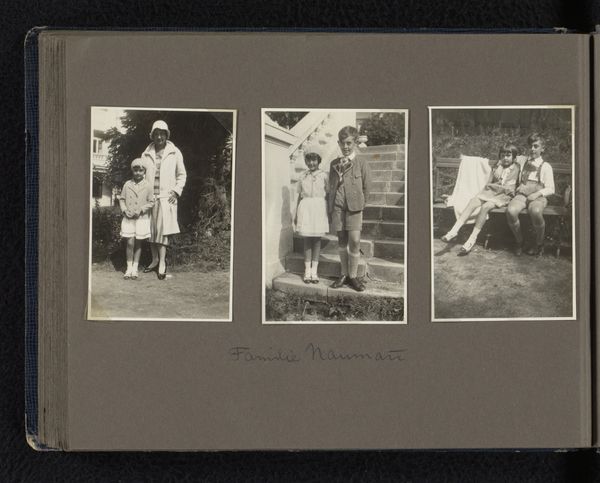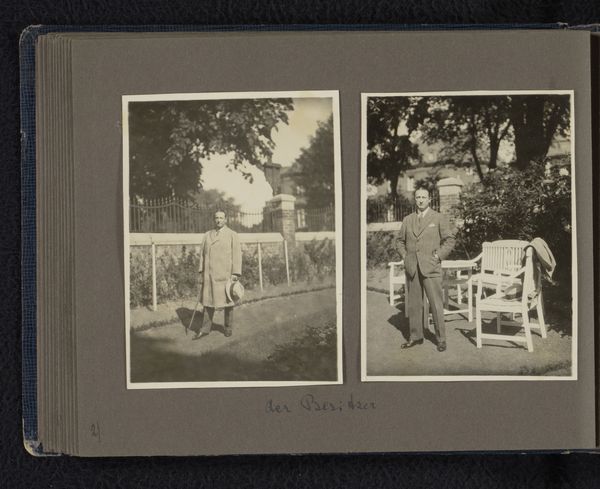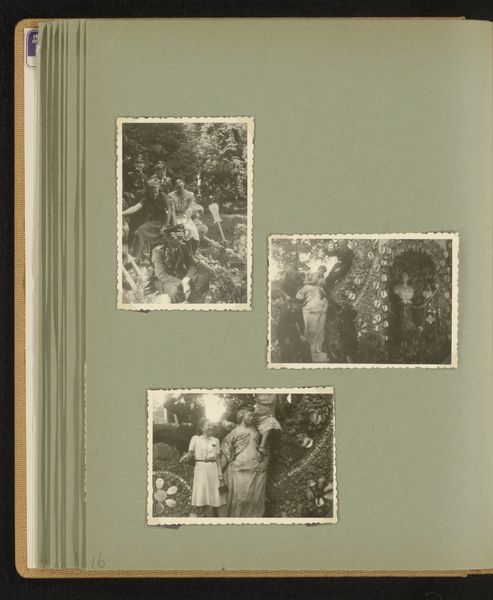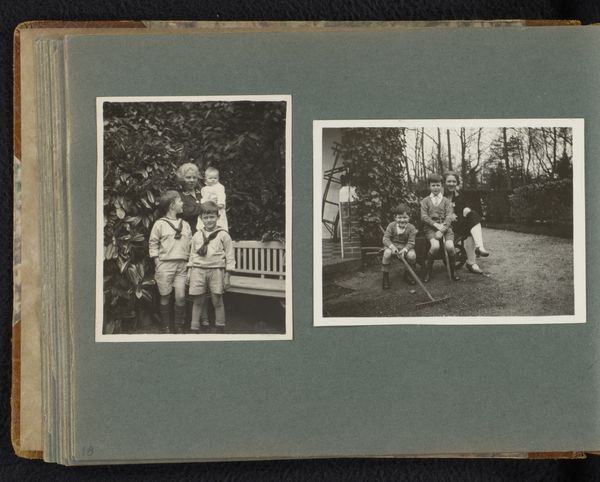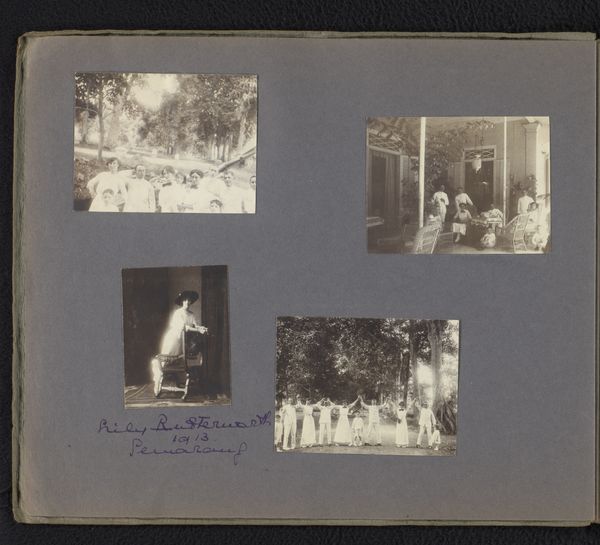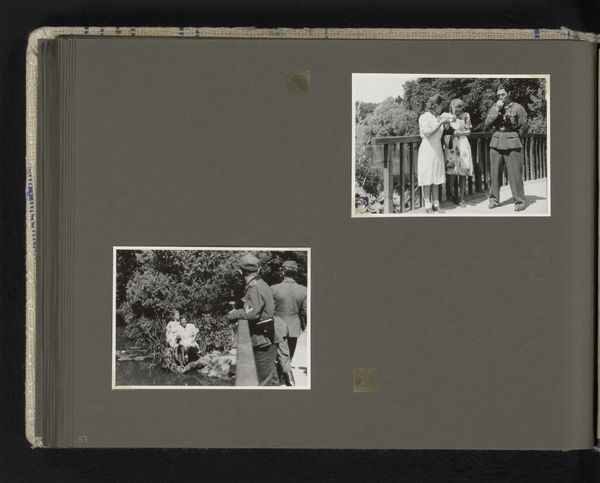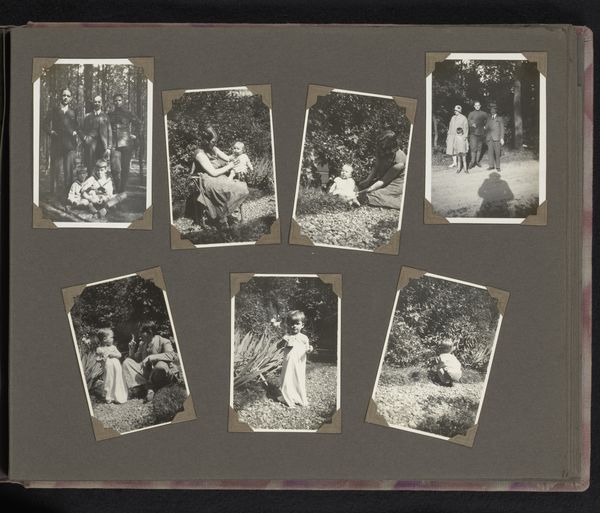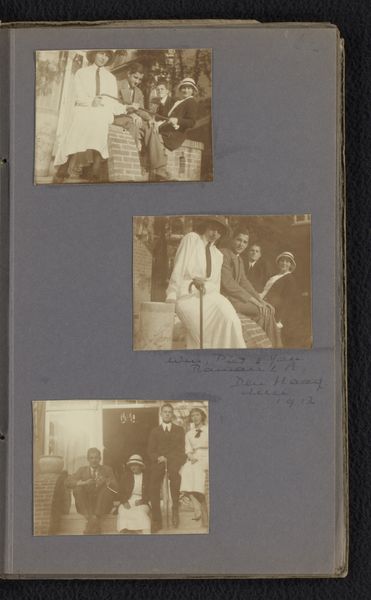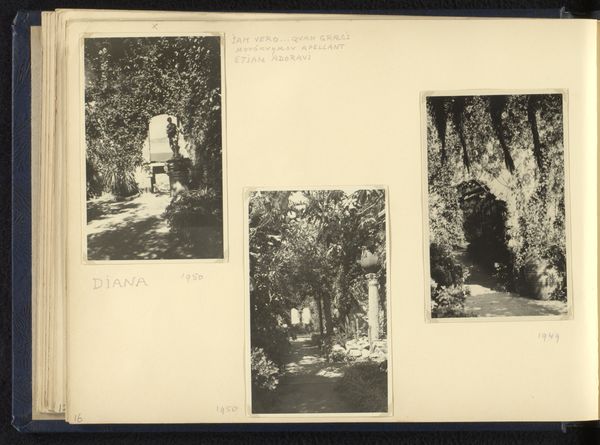
#
aged paper
#
homemade paper
#
paper non-digital material
#
paperlike
#
sketch book
#
personal sketchbook
#
folded paper
#
visual diary
#
paper medium
#
design on paper
Dimensions: height 65 mm, width 110 mm, height 164 mm, width 210 mm
Copyright: Rijks Museum: Open Domain
Editor: This is a page from a sketchbook, showing photographs of a family, likely taken in Tehran around 1928. The aged paper really gives it a sense of history. What jumps out at you about this particular artifact? Curator: The placement of the photos, and their subjects, raises questions about representation and identity within a changing Iranian society. Note the casual, almost documentary style. Photography at this time was becoming more accessible, allowing for new forms of self-representation. Do you notice anything in the clothing or the settings that might indicate social class? Editor: Well, in the bottom photograph, they look quite well-dressed, almost Western in their attire. Is that significant? Curator: Absolutely. The adoption of Western dress was a complex negotiation of modernity and tradition. It was often a symbol of progress but could also signal a distancing from traditional Iranian culture. Think about the audience for these photographs. Were they intended for family consumption, or something else entirely? How would each have been read by each? Editor: That’s interesting; I hadn't considered the intended audience. The photographs certainly feel intimate, as if capturing private moments. The writing reinforces that feeling. It helps give a glimpse into their everyday life. Curator: Precisely. This object offers a small but insightful window into a family's self-image, shaped by both personal choices and broader socio-political forces in Iran at that moment. How might our understanding change if this album were displayed in Iran versus elsewhere? Editor: I hadn't considered the geopolitical dimensions to such personal images. I guess I was mainly struck by how normal the photos appeared. Now I have new angles to think from! Curator: Exactly! Thinking about its place and the circumstances of its potential viewing offers another interpretative frame. Art is almost never neutral.
Comments
No comments
Be the first to comment and join the conversation on the ultimate creative platform.
